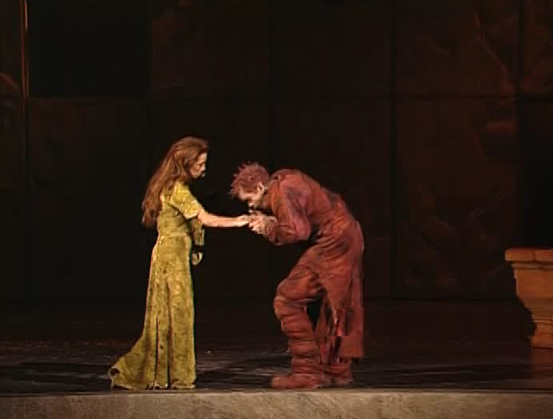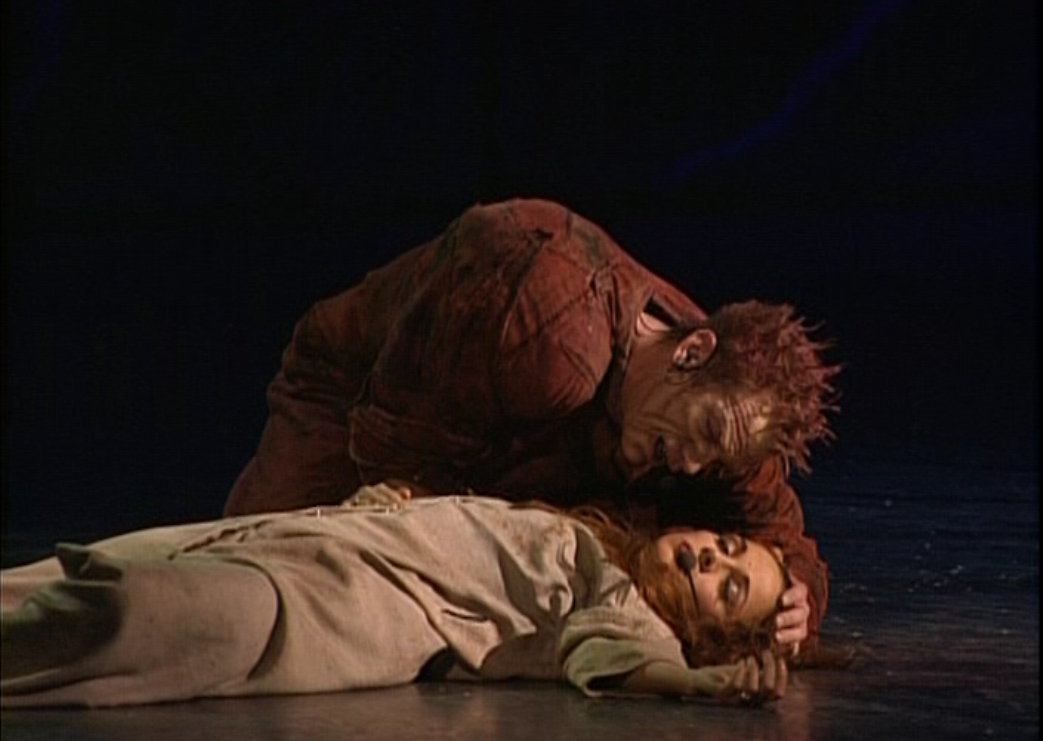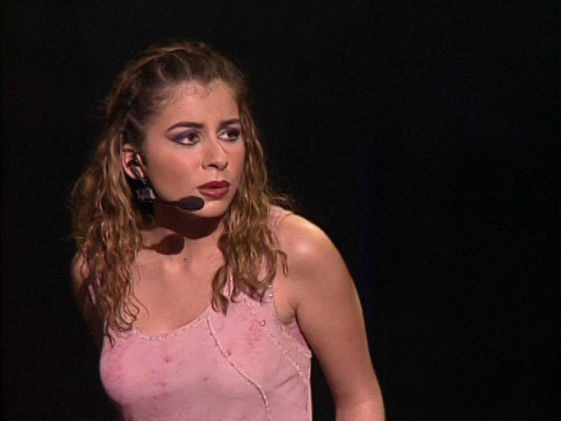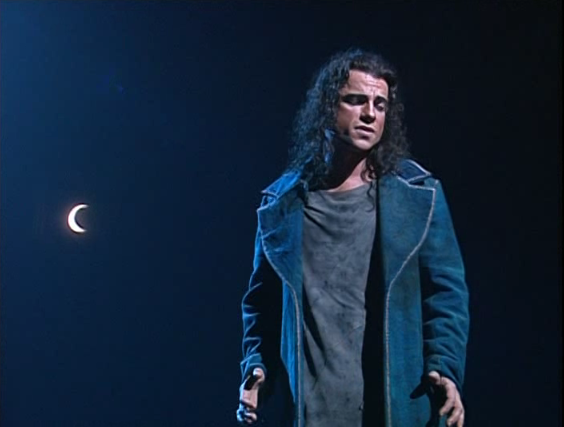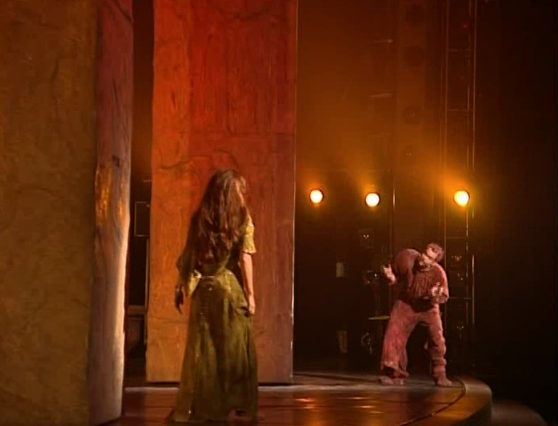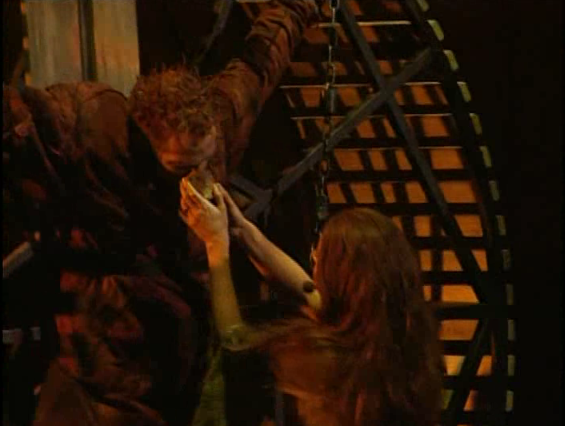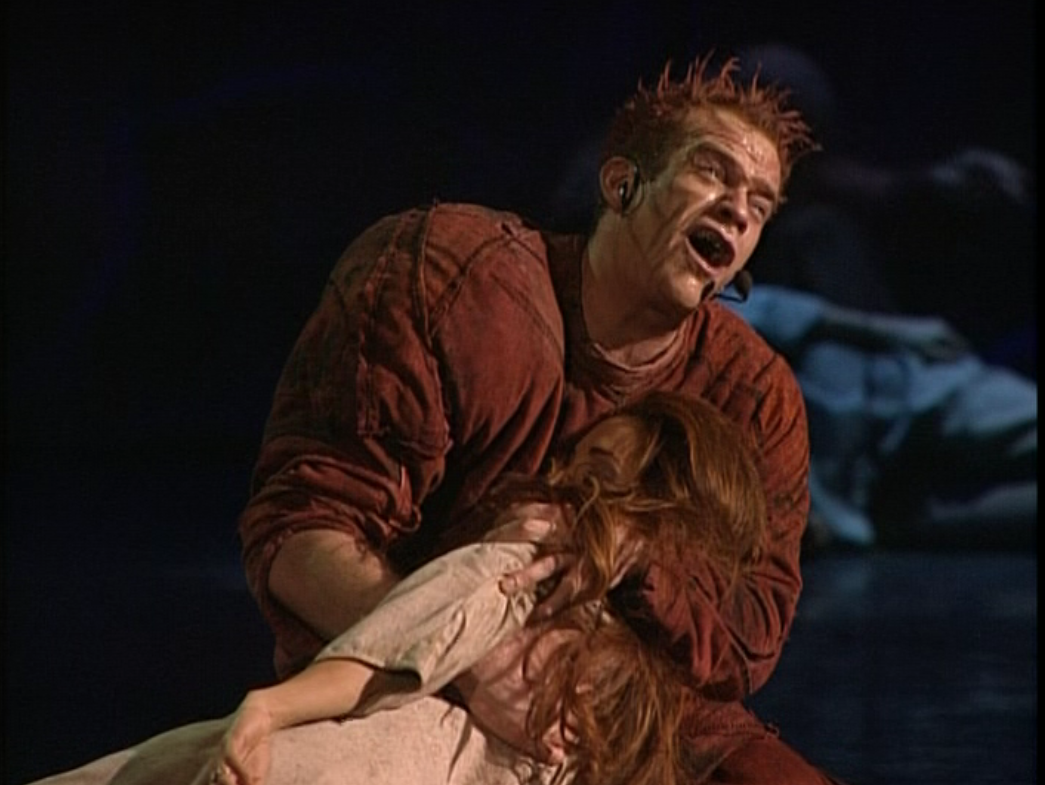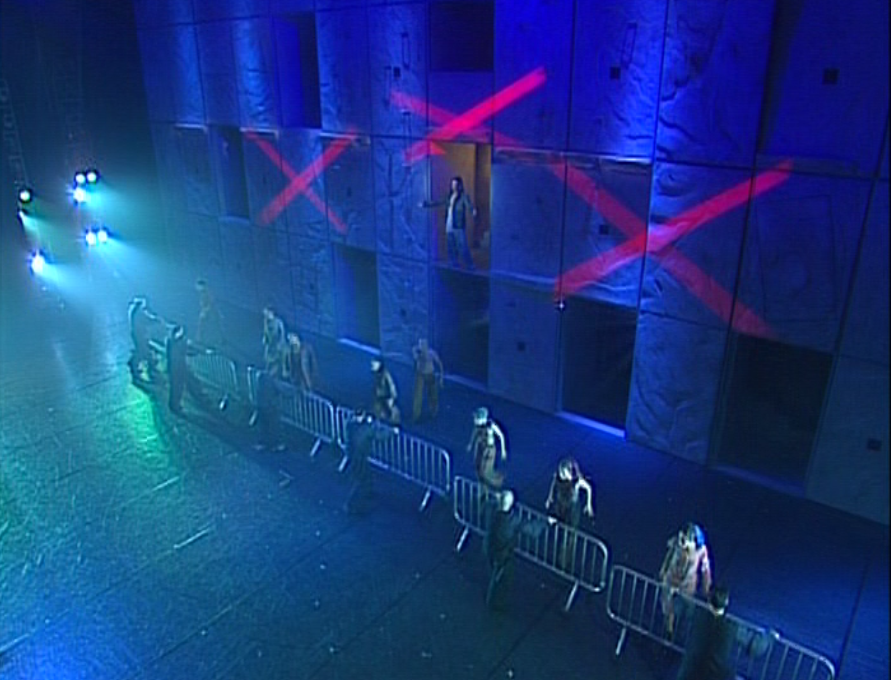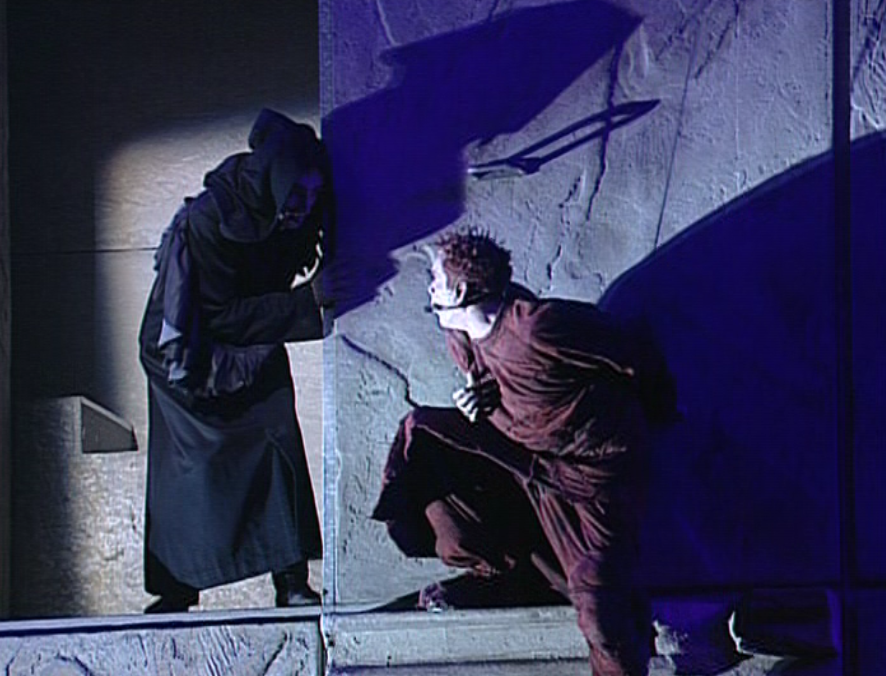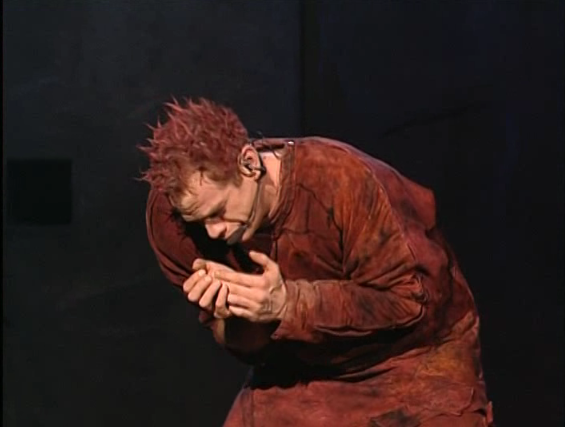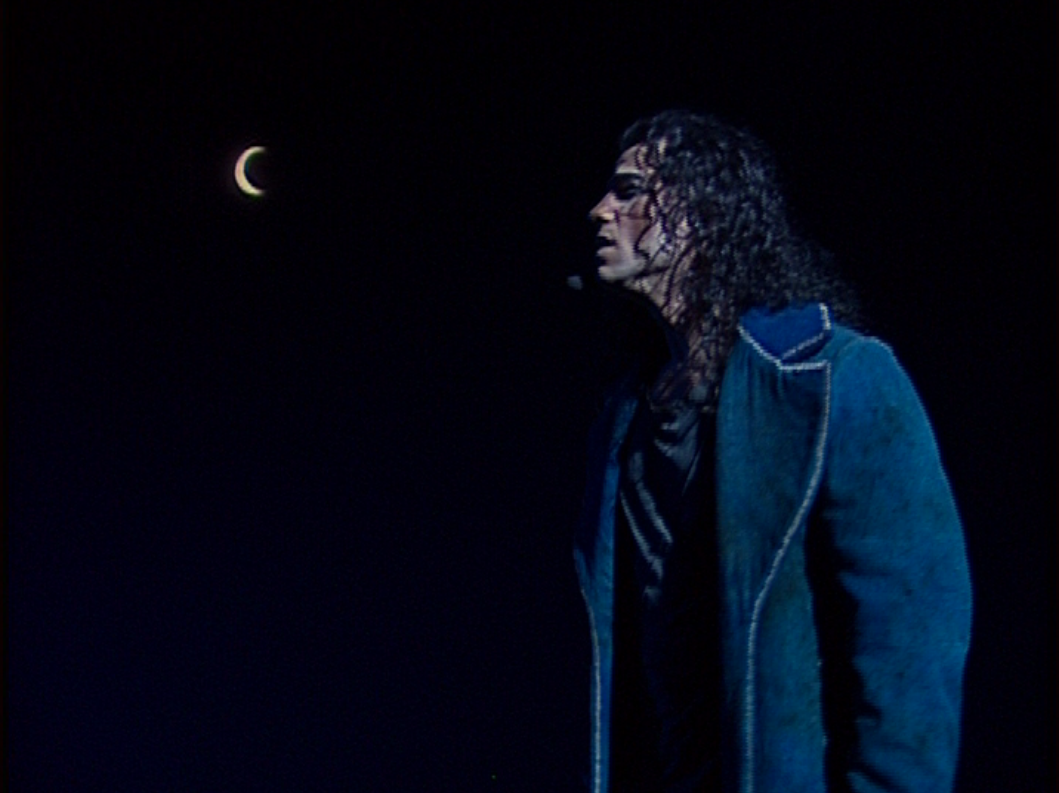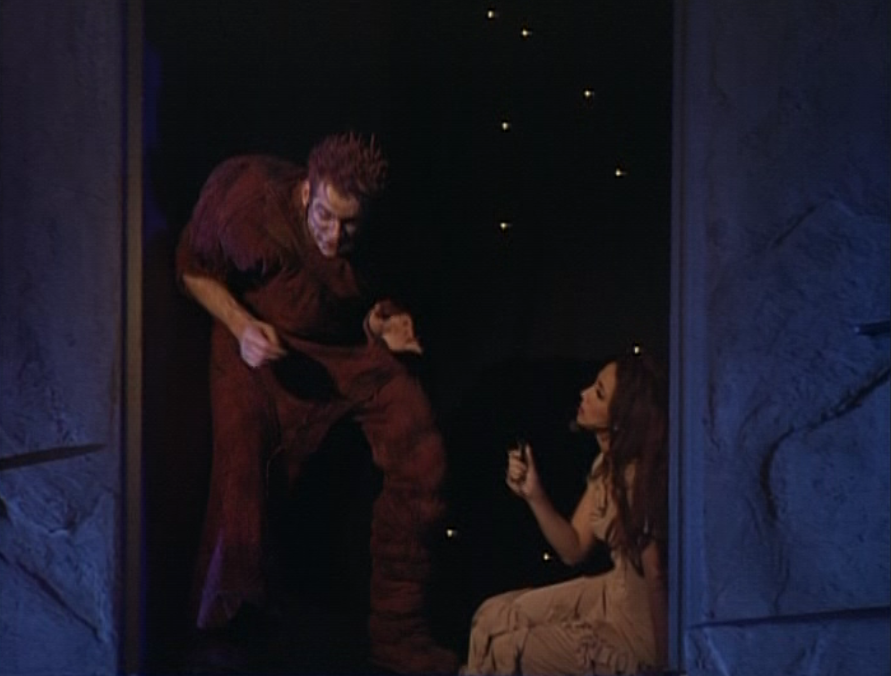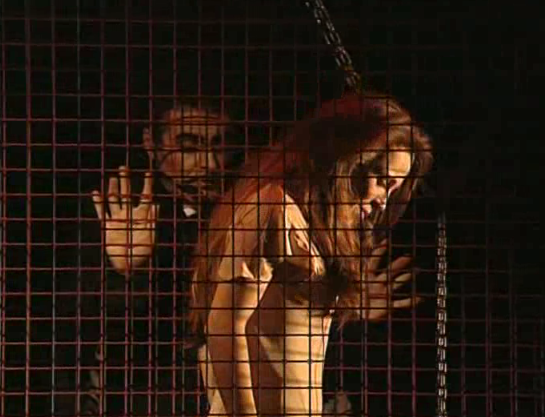In most other versions the order of these songs is a little different. It goes Être Prétre et aimer une Femme, Phoebus, then Je te reviens vers toi and finally La Monture. Both orders make a level of sense but I prefer the original, it just always seemed odd to me that Frollo would sings about loving a woman right after he tortured her, but the order made sense to someone.
Phoebus
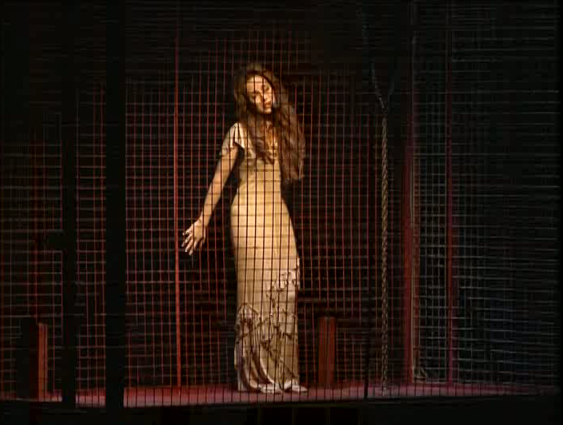
Helene Segara as Esmeralda singing Phoebus
Phoebus is Esmeralda’s plea to the aforementioned. She bittersweetly asks him to save her and gives some exposition about how the man in black stabbed him. She then begs him to at least remember her.
is Esmeralda’s plea to the aforementioned. She bittersweetly asks him to save her and gives some exposition about how the man in black stabbed him. She then begs him to at least remember her.
It’s a pretty yet simple song that has a lovely melody that has wave like quality.
Être Prétre et aimer une Femme (To be a Priest and to love a woman)
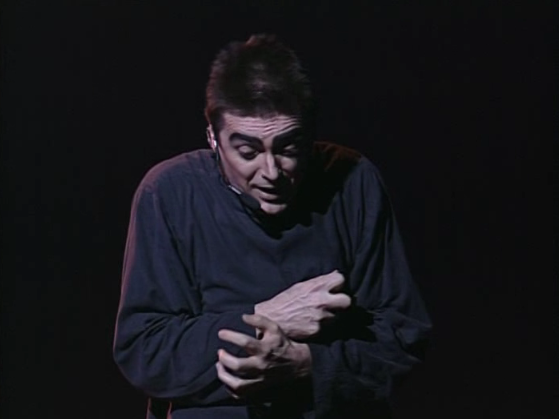
Daniel Lavoie as Frollo singing Etre Pretre et aimer une Femme
Être Prétre et aimer une Femme lifts a lots of its lines from Frollo’s confession to Esmeralda in the jail, so basically I love this song and what is so great about Notre Dame de Paris
lifts a lots of its lines from Frollo’s confession to Esmeralda in the jail, so basically I love this song and what is so great about Notre Dame de Paris is that we get two instances of the jail scene, so yay.
is that we get two instances of the jail scene, so yay.
This song has a lot of power and moving lines. Frollo is a preist and therefore not free to love a woman but he can’t help it because as he stifled his emotions, he has no power to fight them when they are super strong.
The songs also makes it seem that Frollo’s “love” for Esmeralda is not just lust-based, he seems to love is some weird twisted way. This is in constast to other versions and even some versions of Notre Dame de Paris and it really could just come down to Daniel Lavoie’s acting.
The melody is also great. It has a great off-kilter tone that is still pretty which suits Frollo.
La Monture (The Mounting)

Julie Zenatti as Fleur-de-Lys singing La Monutre
La Monture is Fleur-de-Lys’ big number. It’s the songs that really drives home her personality which all the versions is the biggest is this musical. Pending on what version of the musical you are watching this songs is vastly differnet because of the order of song and the staging.
is Fleur-de-Lys’ big number. It’s the songs that really drives home her personality which all the versions is the biggest is this musical. Pending on what version of the musical you are watching this songs is vastly differnet because of the order of song and the staging.
In the original, Fleur-de-Lys sings this song to herself/shadow. This looks cool on the DVD but perhaps to an audience it doesn’t have the same effect so they changed the staging. What is nice about her singing to herself is it makes her look desperate and at her limits and it also makes her asking for Esmeralda’s death seem like it has a pathos because she at the end of her rope and can’r cope with Phoebus anymore. There is no doubt that she means it, she wants Esmeralda dead as there is a just spitefulness in her voice.
The other staging has Fleur-de-Lys singing directly to Phoebus after he sings Je te reviens vers toi. She singings in less a desperate, spiteful way and more in a sexual way. Basically she doesn’t believe Phoebus‘ song even though Phoebus says in his song that Esmeralda will die (at least in the French and English version), though in English he asks Fleur-de-Lys what me must to to get back with her. This staging make Fleur-de-Lys more calculating, cruel and cold. She is more in control of herself and Phoebus and she uses her leverage to get what she wants, the competition dealt away with.
I think it comes down to preference. One staging gives Fleur-de-Lys a little more sadness as she in not as in control of herself or her emotions and the other gives her power and control but she uses it to ensure someone’s death.
Now as far as the song its self goes, because I almost forgot to discuss the song, silly me. It’s great. Like some other songs at this point in the show it has that off-kilter prettiness and Fleur-de-Lys‘ sweet voice is a great contrast to the horrors that she is singings. It’s is Fleur-de-Lys‘ best song in the show, which isn’t REALLY saying that much since it like three but it’s great non the less.
Je te reviens vers toi (I return to you)
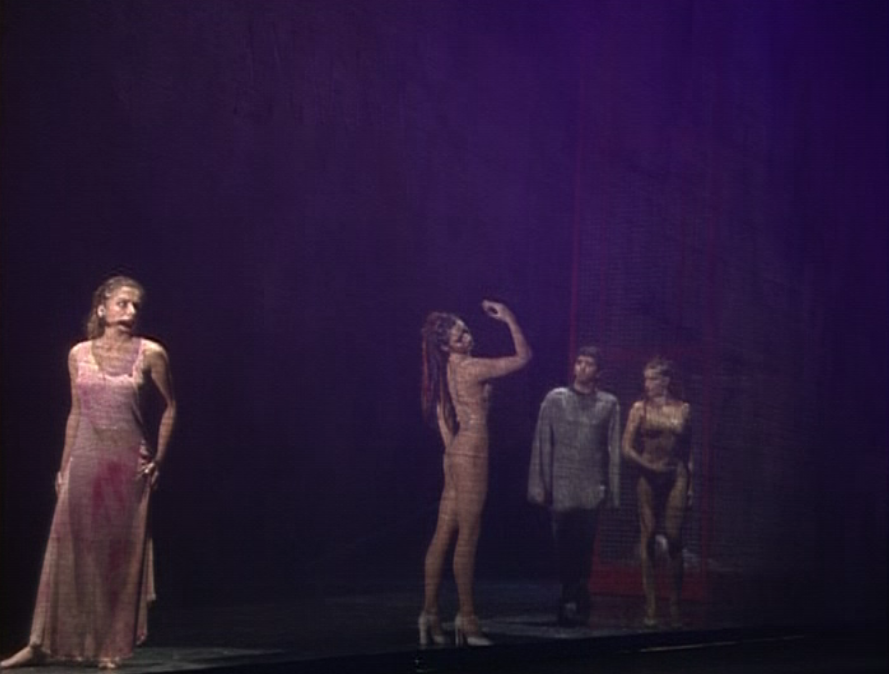
Julie Zenatti as Fleur-de-Lys and Patrick Fiori as Phobues performing Je te reviens vers toi
I REALLY hate this song. It’s mean. Phoebus sings about how he is returning to Fleur-de-Lys and he is all better now. Since it’s clear that Phoebus is lying it probabdly why they switch the songs around but Esmeralda is going to die and yet Fleur-de-Lys is like, “ok makes she does,” not sure why that would have been hard for Phoebus, but even about the order changes.
I dunno this song just seemed mean but it does showoff Phoebus‘ singing and has a nice powerful beat. It’s the subject matter that is detestable and so is Phoebus.
Fun Fact – Patrick Fiori once made the mistake of saying “From the Deeps of you, it’s me I still love” instead of ‘From the Deeps of me it’s you I still love,” pardon my bad translation I only took a year of French but it’s a silly mistake that I could see a Phoebus saying.
Je reviens vers toi
Get the whole GLORIOUS ALBUM HERE




